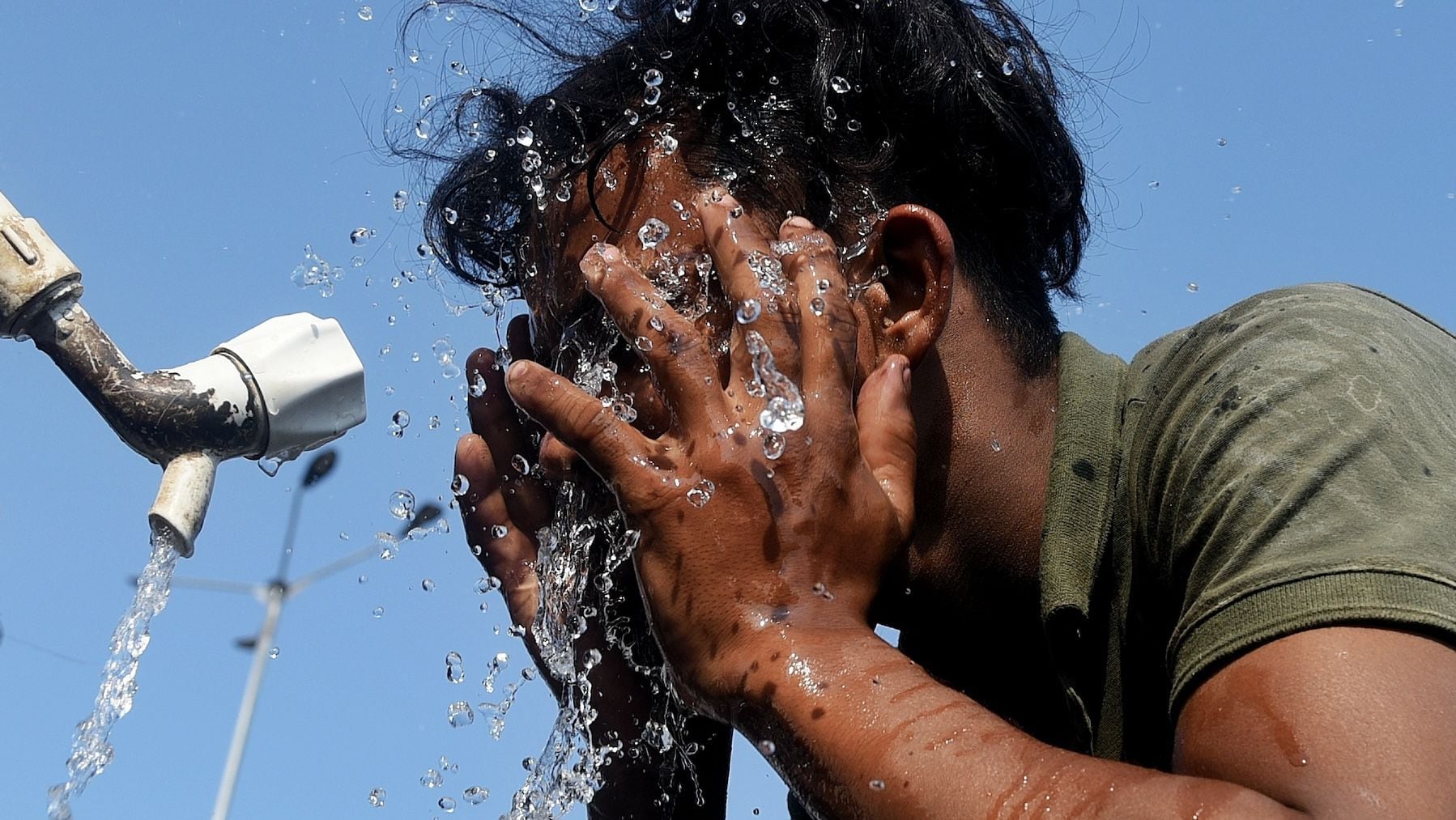
Most days, Genna Metillo spends hunched over a sewing machine in a poorly ventilated factory in an industrial zone about 30 kilometres (18.6 miles) south of Manila, the Philippines, making clothes for international fashion brands.
The pace is punishing under normal circumstances, with high production quotas meaning workers don’t have time to pause, even to go to the bathroom or grab a glass of water. As temperatures soared in April, the situation turned from discomforting to dangerous.
Workers complained of symptoms like headaches, dizziness and nausea. Five people fainted, Metillo said, speaking with translation from Kamz Deligente, the deputy director of the Center for Trade Union and Human Rights in the Philippines.
Such stories are increasingly common, as climate change makes heatwaves around the world more intense, more frequent, longer lasting and deadlier. Asia, where many of fashion’s largest manufacturing hubs are located, is among the regions worst affected.
The fallout is real, growing and largely undocumented, leaving the industry increasingly exposed to a threat it has barely even begun to acknowledge.
It’s Getting Hot in Here
For much of the last two months, parts of South and Southeast Asia steamed under a deadly heat blanket. Though always the hottest time of year, sweltering temperatures, made worse by climate change, dragged on for weeks and broke records across the region.
“I’ve been in Dhaka for five years and I haven’t seen anything like this,” said one factory manager, describing the situation in Bangladesh in April — the country’s hottest on record. “When you get out of vehicles, it’s like a desert.”
Though rains have brought some relief, countries including Cambodia, the Philippines and Myanmar also experienced record-defying heat. In India, where temperatures in Delhi pushed 50 Celsius (122 Fahrenheit) last week, thousands of cases of heat stroke and dozens of deaths have been reported since March, according to local media.
“We’re still in the frame of saying climate and ecological crisis is something that will impact us in the future,” said Liz Parker, an associate member of labour advocacy network Clean Clothes Campaign. “It is having a massive impact now.”
The industry is not prepared to handle the heat.
Most factories are decades old and poorly designed for such sweltering temperatures. Often workers lack access to even basic amenities, like drinking water — something many large brands stipulate their suppliers must provide, but that isn’t always available. Even when it is, many factories limit water or bathroom breaks to no more than once a day in service of production quotas.
Even modern and otherwise well-run factories will struggle to accommodate a world where temperatures above 40 degrees become more common.
During the hottest periods over the last few months, factory water coolers ran out before they could be replenished, air conditioning units overheated and critical equipment stopped working, industry insiders said.
“It’s 40 degrees outside, 42 inside,” the Dhaka factory manager said. “There’s nothing we can do. You cannot air condition; there’s no space, no power, no money. Nobody is going to pay.”
A Quiet, Costly Crisis
Exactly how this year’s high temperatures are affecting the industry is surprisingly difficult to pin down.
Brands and manufacturers don’t systematically monitor and publish data on factory temperatures or their impact on health and safety.
Anecdotally, labour groups say they have received increased reports of maladies associated with high heat and dehydration, like urinary tract infections, heat rashes, dizziness, nausea and diarrhea. The heat also puts more pressure on household incomes, making it harder for those paid by the piece to earn enough to live off and increasing spend on electricity to run fans and buy water and medicine.
But for many workers, the heat is just part of the annual grind — an uncomfortable but temporary backdrop to everyday concerns, chief among them simply making ends meet. Its devastating links to worsening climate change aren’t yet well understood or regularly discussed on the factory floor, said Kalpona Akter, executive director of the Bangladesh Centre for Workers Solidarity.
Even so, rising temperatures might be expected to attract more industry focus because they aren’t just a labour issue; they’re an economic problem, too.
Over the last few months, factories in heat-affected regions experienced increased absenteeism, lower productivity and malfunctioning equipment, industry insiders said. Overworked local grids meant manufacturers in some countries had to rely more on generators to keep production running, a costly (not to mention polluting) measure.
But the threat is still largely being treated as a short-term one that’s managed on an ad hoc basis. The industry is not preparing for a world where temperatures are systemically hotter.
“You have spikes where things get really hot and everyone pays attention to the spike,” said Joe Buckley, Cambodia programme development coordinator at nonprofit labour organisation Solidarity Center. “But things are getting hotter in general. That’s not dramatic … [but] it’s the gradual rise in temperatures that is more alarming.”
Future-proofing the industry for an era of climate extremes will be expensive. Manufacturers, who face intense pricing pressure from brands, extreme competition and market volatility, have little incentive or financial wiggle room to invest in costly factory retrofits.
Still, there are basic, simple measures that can help manage heat. In Pakistan, denim manufacturer Artistic Milliners set up air-conditioned cooling points where workers can take breaks. A handful of factories in Cambodia negotiated heat stress mesasures with local unions, agreeing to turn on cooling systems if temperatures rise above a certain level. Many new factories are being designed to better manage heat by promoting ventilation and natural cooling.
But more broadly, the industry needs to start taking the issue more seriously. Unless it takes steps to adapt to the changing climate, soaring temperatures and flooding in just a handful of manufacturing countries could reduce garment sector export earnings by $65 billion by 2030, prevent the creation of one million jobs and significantly dent operating profits at exposed brands, an analysis by Cornell University’s Global Labor Institute and investment firm Schroders found last year.
“We’ve been doing a lot of work in terms of trying to mitigate climate change, but it’s catching up in our part of the world,” said Nemanthie Kooragamage, group director for sustainable business at Sri Lankan manufacturing giant MAS. “Climate adaptation is as important as climate mitigation now, [but] I’ve never had a conversation about climate adaptation [with the wider industry].”



